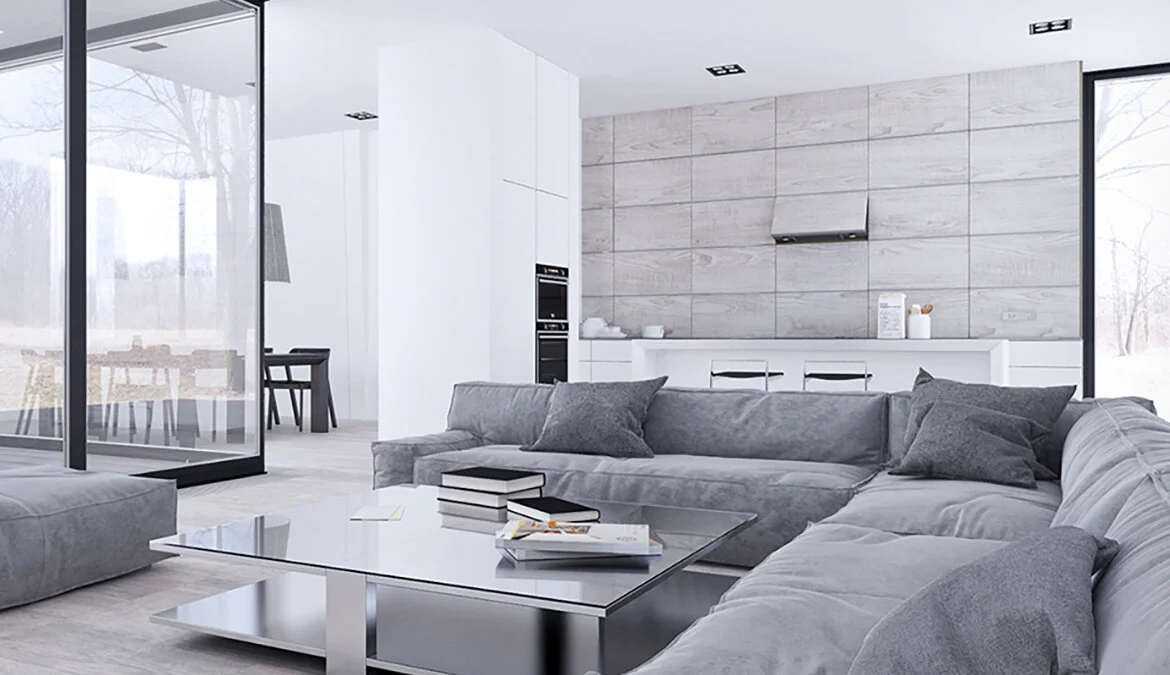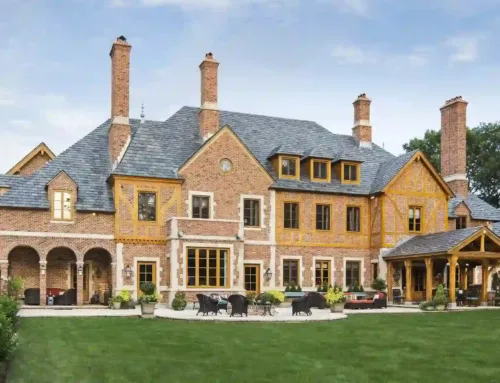How Rendering Enhances Grayscale Interior Concepts
The elegance of simplicity through grayscale interior design is a spot-on representation of your thoughts. As compared to single-tone 3D visuals, greyscale interior concepts enhance the overall perspectives for architects and interior designers. However, grayscale interiors are characterized by their monochromatic scheme, textures, and simple, elegant designs. Such space is filled with subtle tones, material experiments, and attractive lighting to give the space more depth.
Well, if you are worried about the grayscale interior design cost, don’t be. If you outsource to top rendering companies, they charge you according to your project scope. If you require design-only services, you can expect to pay between $450 and $1,500 per room. Plus, if you need a full option which includes furniture, decor, and installation, then expect almost $1,000 to $12,000 per room. So, it all depends on your project requirements, which is affordable if you compare it with future rework due to design flaws. Now, let’s jump into insights of how rendering enhances grayscale interior concepts:
SWOOP IN TO WITNESS HOW RENDERING ENHANCES GRAYSCALE INTERIOR DESIGN CONCEPTS AND HELPS IN MAKING THE RIGHT DECISION FOR ALL TYPES OF PROJECTS!
Concept of Grayscale Interior Design through Rendering
Basically, grayscale interior design through rendering is a detailed process that depicts objects without adding any textures or colors. You can say that it looks like a clay or white 3D image or animation. Plus, the clients can achieve these CGI results in less time as compared to adding color and textures through competent 3D interior design rendering services. So, if you have tight timelines or you want to impress your clients in a rush, then nothing is better than grayscale interior rendering.
However, to enhance the results of grayscale interiors, advanced techniques are used. It assists architects and designers in approving intermediate results. Rendering experts review the geometry, lighting, camera angles, and proportions of an interior. However, this whole scenario is beneficial to make any amendments required in the design early on.
How are 3D rendering Services used by Architects?
Architects or realtors use 3D rendering services to get grayscale renderings of interiors and exteriors to pinpoint any flaws before time. Plus, if someone requires interior designs with colors and textures, it is totally up to you; ask experts right away!
The other benefit is the “timing”; the fast execution makes grayscale rendering a great choice to visualize architectural concepts. The overall CGI process for both architecture and interior design professionals saves them time and money for clients.
Advanced Rendering Techniques in Grayscale Interiors
1. Global Illumination (GI)
Global Illumination mimics both direct and indirect lighting that captures how light bounces off the surfaces. Well, in grayscale Interior rendering, the CGI experts make sure that the light and shadow are perfectly created to enhance the overall visuals. Various gray and white interior design ideas are achieved by using advanced techniques such as radiosity and photon mapping.
2. Ambient Occlusion (AO)
The other advanced method is named ambient occlusion, which evaluates the points in a scene that are exposed to lighting, dark areas, and where the light is naturally occluded. This gives more realistic visuals in the overall space where color contrasts are minimal.
3. Ray Tracing
Ray tracing is one of the most famous techniques in grayscale interior rendering that traces the path of light rays. This process is done to showcase flawless reflections, refractions, and shadows in the design. Just like you visualize a room where sunlight or artificial lights fall on materials, that way CGI experts create glossy finishes to enhance realistic results.
- Neural Rendering
By combining machine learning with older rendering techniques, neural rendering can predict and generate realistic images based on input data. However, this technique is fast and enhances accuracy in grayscale designs.
Use Lighting to enhance realism in Grayscale Spaces
Lighting is the biggest factor that enhances the overall results of grayscale interiors. However, it sets the mood, all the surface details are clearly visualized, and it helps to define different property features. For that, you can use the following tools:
- HDRI (High Dynamic Range Imaging) can help to create realistic results by adding both dark and bright areas. This way, the overall shadows and highlights look more real!
- Physically-based lighting Models simulate how light interacts in the real world. This way, the materials and surface look more natural and realistic.
- Dynamic Lighting Scenarios help to experiment with different lighting setups, like daylight or indoor lights.
TO MIMIC THE SAME VISUALS AS YOU HAVE IMAGINED, YOU MUST OUTSOURCE YOUR NEEDS TO OUR EXPERIENCED VISUALIZERS AND IMPRESS YOUR CLIENTS IN THE FASTEST TIME!
Conclusion
To sum it up, grayscale interior design achieved through advanced rendering techniques discussed in this guide will provide you desired realistic results. However, as time passes by, more opportunities are evolving, which is beneficial to architects and designers to create flawless interior and exterior designs.





